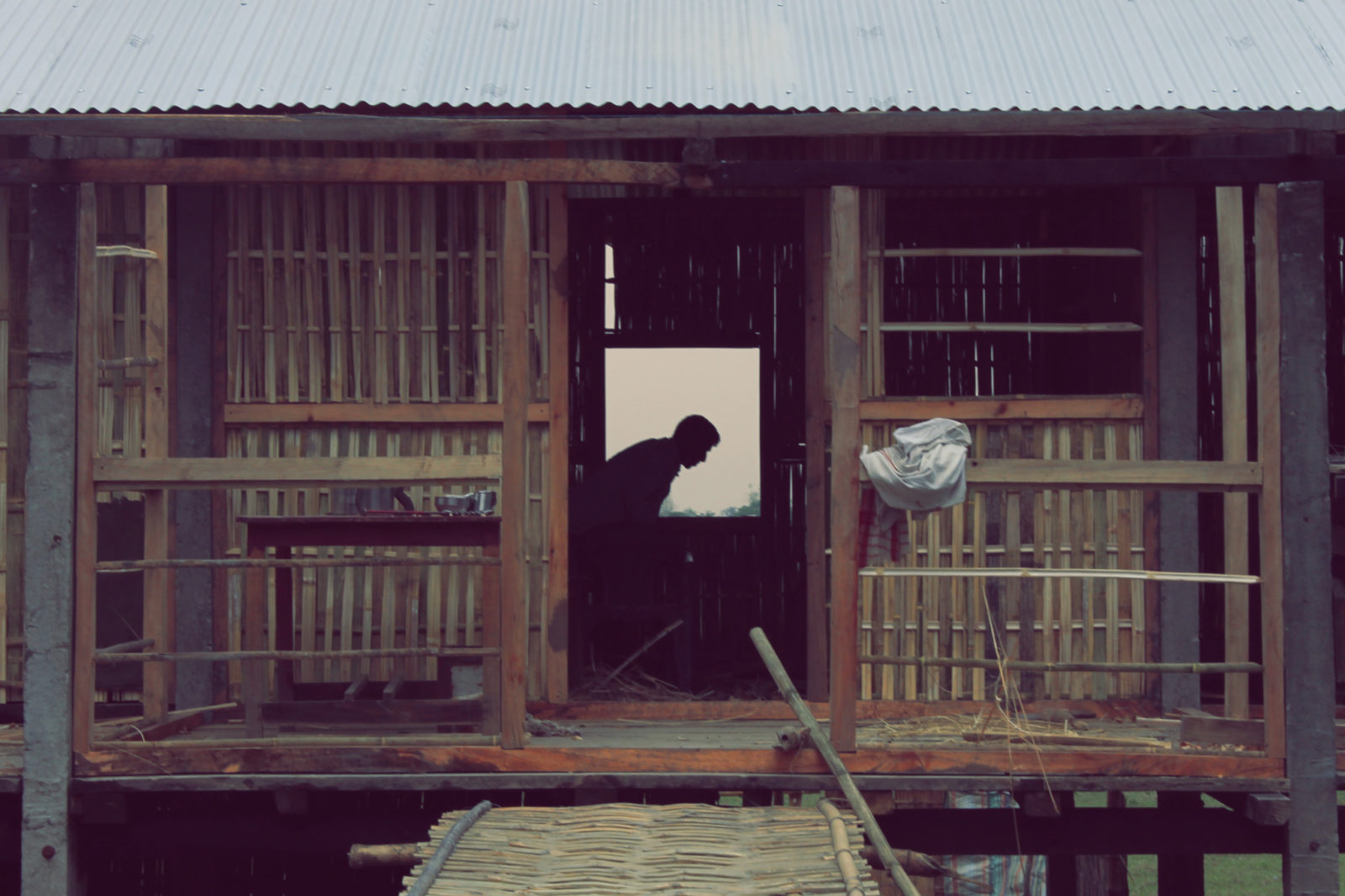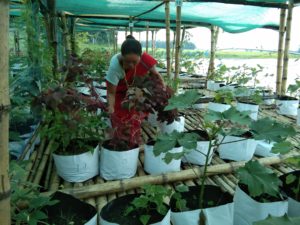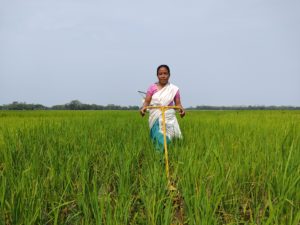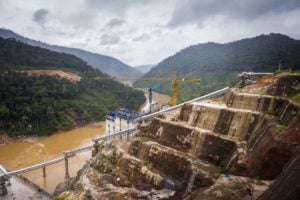The Assam flood of 2021 has thus far affected around 647,000 people in 22 districts.
As the Brahmaputra floods each year, it subsumes big chunks of land, erodes river islands, displaces their people and puts paid to their livelihoods. The communities residing on low-lying land are the most affected.
What do you do when the river that sustains you is also the river that devours you?
The lives and livelihoods of two riverine communities in Assam – the Mising of Majuli and the Bengali Muslims, known locally as the Miyah, of Barpeta district – depend entirely on water. Despite Assam’s long tryst with the Brahmaputra, we don’t know enough about how the river’s flow has guided these communities.
Understanding their association with land and water, and their traditional ways of coping, could tell us something about why, despite its destructive tendencies, these people continue to live with the river.
Salmora village, Majuli
Ranju Kalita lives about a kilometre from the Brahmaputra. In August 2020, the river arrived at her doorstep for the seventh time. She laughed, recalling the moment. “Hoyoto nadi amak bhal paye. E pratibare amar pisht aahe.” (“Maybe the river loves us. It comes chasing every year.”)

“In 1997, the river was 4 km away from where we had moved our house. The riverbed is now a five-minute walk away,” Kalita says, as she balances a basket of wooden planks on her head. She walks up the roadside, over a small bridge, enters her house and holds up her cargo against a hole in the wall, where her husband hammers a nail into each plank, one by one, as he builds a window.
This time, Kalita and her husband are building their house the Mising way. “Hopefully, this will last us through the next flood,” she says.
In fact, all the houses on their street, which lies close to the river, are being rebuilt this way.
The kare okum, also called chang ghor, is a house on stilts, which the Mising have traditionally built to survive life with the Brahmaputra. Every kare okum stands on bamboo poles at least 10 feet tall.
People enter the house over a bamboo bridge or with a ladder. And under the house, amid the stilts, the family rears its cattle, chicken and pigs. The house’s bottom is made of bamboo as well, and the family can check on their animals through small slits in the floor.
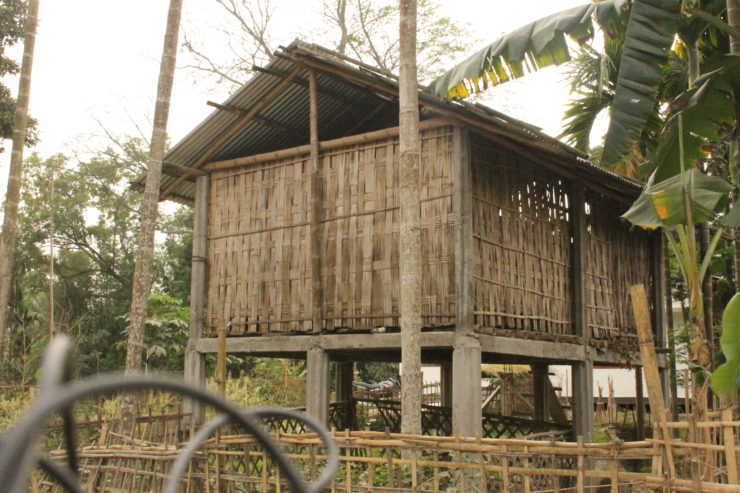
The underside also holds a boat, in case they need to move away quickly when the river floods. Sometimes the boat is moored in a pond or a deep pit of rainwater next to the house.
Kalita’s family itself is not one of the Mising, just like many other families living by the Brahmaputra.
“Earlier, we would move to the roadside until the floodwaters receded,” she says. “For the past few years, we have built our houses on stilts. The height of one stilt house was 18 feet, but after the last flood, when the house was submerged in water, we had to increase it to 20 feet.”
The Mising’s way of coping with floods is reflected in their architecture, cropping patterns, ways of storing dry and wet foods, and the way they prepare to escape the river’s wrath. That these are becoming more popular is testimony to their effectiveness.
Kalita’s family can’t simply move further inland. Most others are doing so, but her family is a part of the Salmora community of potters. “We have to dig a 70-80-foot-deep pit on the river banks to retrieve the glutinous clay. The clay, called kumhar mitti, is taken home, soaked in water overnight, and it is the women who shape the final product and sell it to the Mising,” Kalita says.
The Mising of Majuli live around the river. They brew their own alcohol – called apong, an integral part of their culture – in these clay pots.
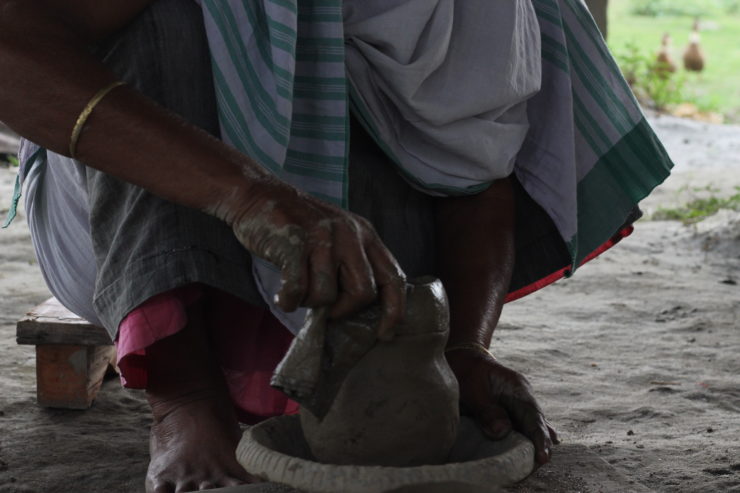
This pottery trade is several generations old, and speaks to the communities’ interdependence as much as to their shared relationship with the Brahmaputa.
Apart from the river island of Majuli, the Mising are also settled in Dhemaji and Lakhimpur districts, among other parts of Assam’s riverscape.
Their primary occupation is agriculture. But multiple floods over many years, and erosion of and siltation over their lands, have affected their practices. “There are times when the crop rots in floodwater, but we also know that the production of potato, mustard, dal immediately after the flooding season is very good,” says Manoj Payeng, a Mising farmer. “We grew up near the river and this is how we live.”
“During my field visits, whenever I ask people where their land is, they point to a distant portion in the river,” says Mirza Zulfiqur Rahman, who studies water-sharing and transboundary spaces at the Institute of Chinese Studies, New Delhi. “People who have lived with the river for generations also move as the river keeps moving. These communities live with different perspectives about the flood.”
According to Rahman, the Mising believe that if the river has taken a part of land away from them, it will return the land some years later, in another place.
The Mising’s stories of floods are stories of communities that have found ways to adapt to and coexist with the river. In a way, the river pervades their consciousness, percolating through their lives and livelihoods, and their traditions.
Temporary chars
Some 500 km downstream, in lower Assam’s Barpeta district, lies the Dakhin Lakhipur char – a temporary sandbar that is the product of sediments deposited by the Brahmaputra.
Dakhin Lakhipur char is a boat ride away from Sontoli village, and home to about 40 families that resettled here in March 2021, after floods forced them out of their homes in 2020.
It is common for people to settle on chars; in fact, across the state, these islands cover 360,000 hectares of land and host some 2.5 million people. Every char is eroded on the upstream and receives silt on the downstream. So every year, the floods affect the shape and place of the char. Sometimes the river creates new islands; others it washes out of existence.
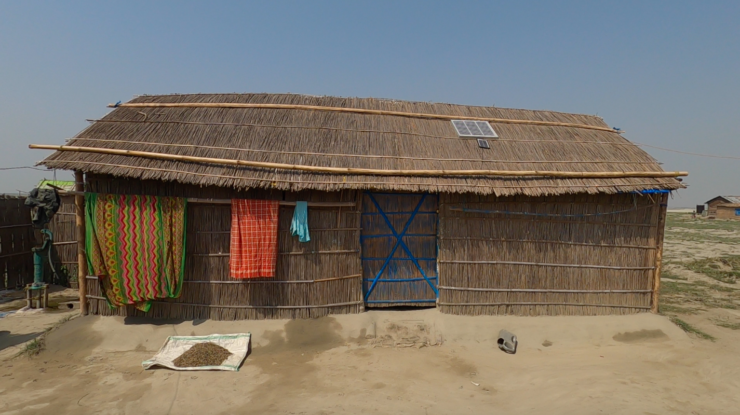
People on the char have limited access to schools and hospitals.
Among the settlers of the char are the Bengali-Muslim Miyah, who migrated from erstwhile East Bengal. Unlike the Mising, who live with the floods, the Miyah keep moving. They observe the water level closely, from the start of the summer monsoon.
They live in temporary structures of woven bamboo walls and tin or thatched roofs, all erected on a raised platform called a machang. There are no separations between rooms. The whole structure is put together such that, when the river floods, it can be dismantled in minutes, loaded onto boats and carried to another char or to the bank.
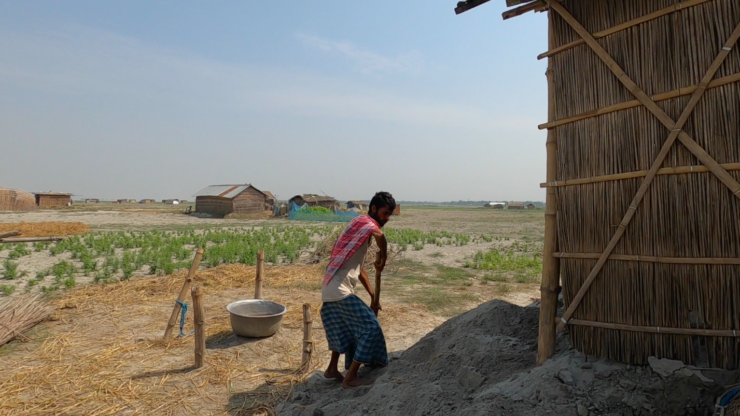
“The idea of land for the Miyah is more attached to the land you can farm, not the land where you have a house,” Shalim Hussain, a Miyah poet and researcher in Assam, says. “If the cultivable land is eroded or goes under water, how do you survive?”
So the Miyah keep moving. “When people have more resources, they move to the kayam char, a relatively stable island.”
Limits of adaptation
Both the Mising and the Miyah have found ways to adapt to life along the Brahmaputra, but they live in extreme poverty. They don’t have amenities like a toilet inside the house; getting an ambulance quickly during a medical emergency is out of the question.
Anju Payeng, a Mising vegetable-seller, recalls her mother being critically ill during the floods last year. “It takes time to reach Jorhat, where we can find a doctor – we have to take a ferry from Majuli.” But when the river is in spate, the ferries don’t run, and the people living on the char are practically marooned.
Mamang Payeng, an 81-year-old resident of Majuli says: “We used to celebrate the arrival of a flood, everyone waited for it. The water entered and it left. It was not destructive.” But the floods have been of late.
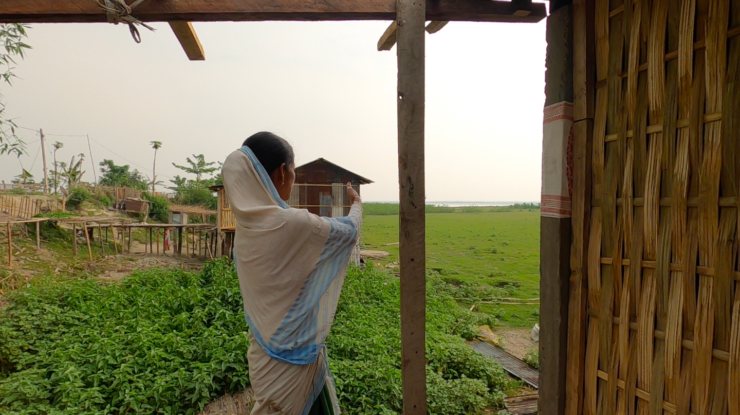
The people are used to riverine floods; they are not, however, used to floods resulting from breached embankments, nor are they used to the higher sediment load. In effect, the scale and intensity of floods today are beyond what the Mising and the Miyah have learnt to adapt to. And at the end of the day, they’re under constant threat of mass displacement.
This is why moving away from the river, and further inland, has been becoming increasingly desirable. But they face two big challenges, like Ranju Kalita: they lack the financial resources and the ability to adapt to different livelihoods. Increasingly erratic rainfall has rendered rainfed agriculture an exercise in uncertainty. Some Mising men have now taken to timber-cutting.
Similar stories echo downstream, among the Miyah. Aimona Khatun, on Dakhin Lakhipur char, says: “We cannot live in other places because the land is very expensive. Here, we can farm our own vegetables, sell them in the local market and earn enough to sustain ourselves.”
Community resilience
On 9 April, 2000, water breached a dam in Tibet, leading to flash floods in Arunachal Pradesh. The disaster paved the way for an agreement between India and China to share hydrological data.
India signed a memorandum with China in 2002, but also realised the need to develop its own flood-forecast mechanism. By 2009, the North Eastern Council and the North Eastern Space Applications Centre had come up with a way to warn people of imminent floods.
Twelve years hence, this system is in force across the state, even as the loss and damage to life and property continues unabated.
“Assam has increasingly moved towards becoming an ‘embankment economy’ – the construction of embankments along the Brahmaputra has become a business involving contractors for construction, maintenance and repair,” Rahman, of the Institute of Chinese Studies, said. These “embankments, as we hear each year, give way at the peak of the flood season, leading to more-intense floodwaters and more silt coating the land.”
Small, closed communities have adopted informal ways to warn of floods. An old man in Majuli’s Kamalabari village, close to the centre of the char, said a few men living near the water would ride around on bicycles and alert people about an impending flood.
“For the results of flood-impact reduction to show on the ground, the policy approach has to move from flood management or flood containment to risk management and building resilience,” said Partha Jyoti Das, head of the water, climate and hazard division of Aaranyak, a wildlife NGO in Guwahati.
Investing in supporting resilient communities that are already adapting to the river is better than investing huge sums in hit-and-run engineering methods to tame the riverPartha Jyoti Das, Aaranyak
“In Assam, people have traditionally built a cordial relationship with the river.” But when a decision needs to be made, to dredge a river or to build reservoirs, politicians and bureaucrats confer among themselves, “without consultation with scientists – leave alone consulting the communities that know the pulse of the river,” Das added.
The Mising and the Miyah, and other communities, aren’t going to become less vulnerable to floods if the government doesn’t make its governance more inclusive. Social interventions must tap into traditional knowledge systems instead of persisting with unsustainable, knee-jerk responses.
“Investing in supporting resilient communities that are already adapting to the river,” Das said, “is better than investing huge sums in hit-and-run engineering methods to tame the river.”
This article was first published by The Wire and has been republished with permission. It has been edited lightly for house style. This article and accompanying pictures cannot be republished without permission from The Wire.
